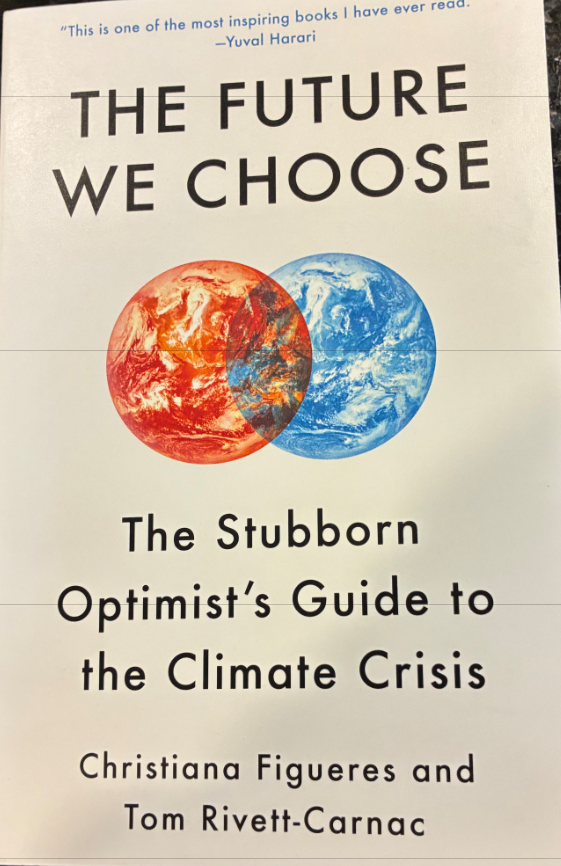Commentary
Beware of plastic clothes

ACES leaders and Youth Corps team members
Editor’s note:
This is one in a continuing series of guest opinions about fostering environmental stewardship and leadership coordinated by ACES — The Alliance of Climate and Environmental Stewards.
As society struggles to reduce the amount of plastics pollution flowing into our landfills and water ways, one lesson is becoming clear. We shouldn’t be buying clothes made of plastic.
Per the National Institute of Health, micro-plastic fibers, like from polyester clothing, make up a large proportion of micro-plastics found in the environment. There is good reason to consider synthetic textiles a major source of micro-plastic fibers, and it will not diminish since the use of synthetic fabrics, especially polyester, continues to increase.
Micro-plastics from textiles are called microfibers only because of their shape. The cloth is still a plastic product. Checking some of your clothes you will find words like “polyester,” “nylon,” “polyamide,” “acrylic.” These are examples of plastic materials very commonly used in clothing. When washed with your laundry, worn, or dried, they release tiny plastic fibers into the water and the air. These microfibers have been found in almost everything we eat and drink: fish, seafood, chicken, tap water, bottled water, salt, beer. They have deeply entered our food chains.
It’s a global problem. A morning editorial in the India Times on June 15 addressing the impact of micro-plastics on human health globally said “micro-plastics make their way into the human bloodstream directly through products that use micro-plastics as an active ingredient or through secondary sources such as drinking water or the food chain. “
But the world seems to be slowly waking up to the problems and according to the International Business Times on May 25, “Some 175 nations pledged last year to agree by 2024 a binding deal to end the pollution from largely fossil fuel-based plastics that is choking the environment and infiltrating the bodies of humans and animals. A global ban on single-use plastic items and “polluter pays” schemes are among the measures under discussion.”
Unfortunately, the demand for cheap and “fast fashion” has designers and manufacturers taking the path of least resistance and making most clothes with these heavily polluting plastics materials. and according to a study published in 2021 the statistics are startling: The global production of synthetic textile fibers requires as much oil as Spain annually.
Plastic microfibers have been found falling in the form of plastic rain, mostly from synthetics fibers used for clothing, on protected areas, deposited there by wind and rain.
Plastic microfibers have been found in the deepest point of the earth, the Marianas Trench under the Pacific Ocean, and on the peaks of the Himalayas and in the melting Arctic ice.
Personally, you can take action to reduce this problem by adopting these habits for your clothing choices that can make a real difference in the world’s ecology. First, buy good quality long lasting clothing made with natural fibers like silk, cotton, bamboo, or linen fibers. Second adopt the youthful trend of “thrifting” by buying vintage or second-hand clothing made with non-plastic fibers whenever you can.
Luckily, we see a glimmer of good news locally as many of our area retailers participating in Forever Green Newburyport, a Chamber of Commerce sustainability initiative, are emphasizing clothing and other products that reduce the use of plastics. For example, newcomer retailer Leallo on State Street, Newburyport emphasizes clothing made with natural fibers. And of course, our area has a wide array of thrifting opportunities like Gentry’s or A Touch of Naples at the Tannery to find long lasting high quality natural fiber items.
You can help also by changing the way you wash your clothes. Wash them a bit less often and use the cold water setting to help reduce the amount of broken fibers entering our water and air. While the plastic debris floating on the world oceans and onto its beaches is highly visible and is raising people’s awareness of the problem with single use plastics for example, every load of wash you do sloughs off lots of plastic micro particles into the rinse water and the dryer vent.
A simple solution exists ultimately for individuals. Buy sustainably made natural fiber clothing and don’t buy any more clothes made with synthetic fibers and slowly ween your closets of plastic clothing.
Our Youth Corps asks you to help reduce the volume of plastic pollution from clothing – be proactive and buy natural fiber items. Please provide any thoughts about a project or practice that could foster less plastic pollution and send us a note at acesnewburyport@gmail.com.
To learn more about ACES and its Initiatives, visit https://www.aces-alliance.org.
.svg)



